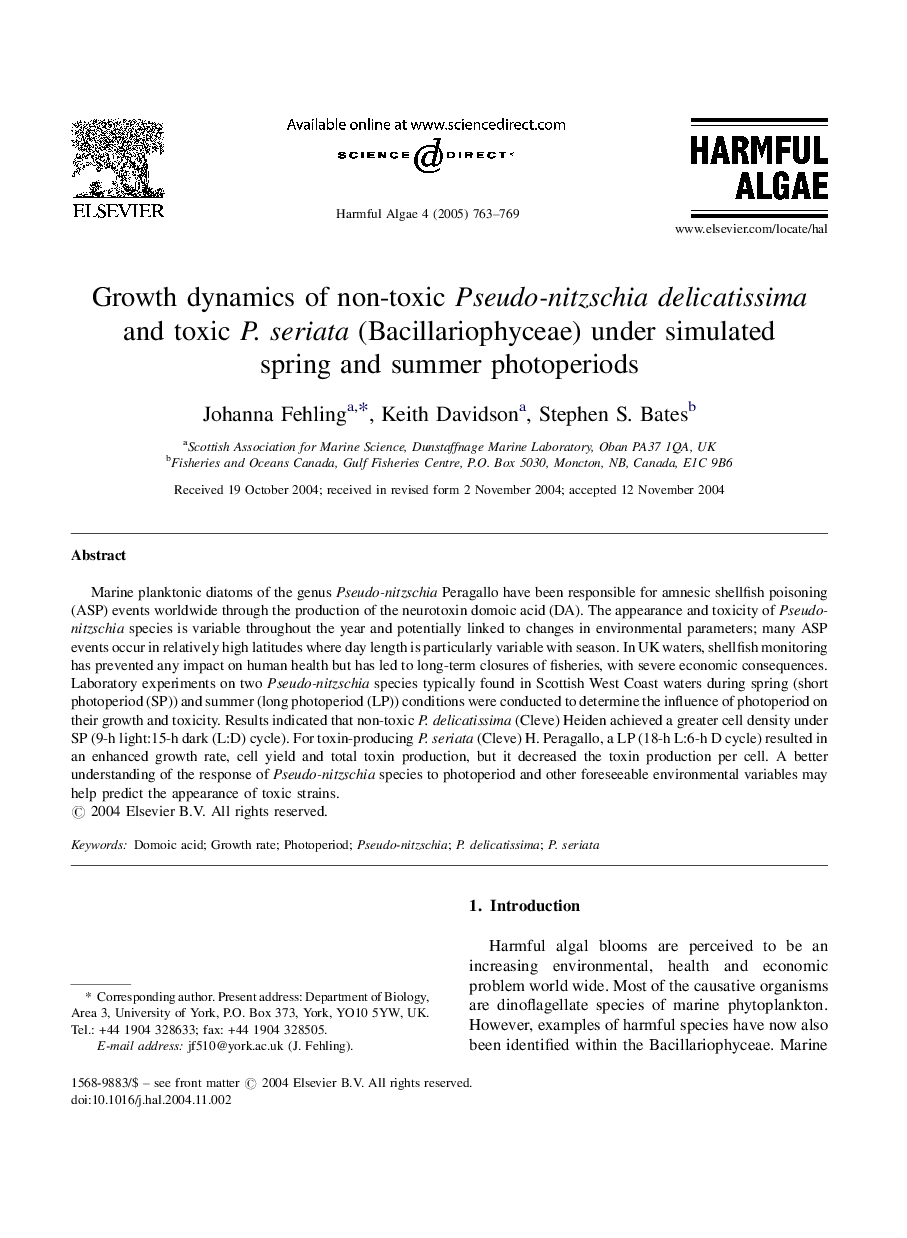| Article ID | Journal | Published Year | Pages | File Type |
|---|---|---|---|---|
| 9482612 | Harmful Algae | 2005 | 7 Pages |
Abstract
Marine planktonic diatoms of the genus Pseudo-nitzschia Peragallo have been responsible for amnesic shellfish poisoning (ASP) events worldwide through the production of the neurotoxin domoic acid (DA). The appearance and toxicity of Pseudo-nitzschia species is variable throughout the year and potentially linked to changes in environmental parameters; many ASP events occur in relatively high latitudes where day length is particularly variable with season. In UK waters, shellfish monitoring has prevented any impact on human health but has led to long-term closures of fisheries, with severe economic consequences. Laboratory experiments on two Pseudo-nitzschia species typically found in Scottish West Coast waters during spring (short photoperiod (SP)) and summer (long photoperiod (LP)) conditions were conducted to determine the influence of photoperiod on their growth and toxicity. Results indicated that non-toxic P. delicatissima (Cleve) Heiden achieved a greater cell density under SP (9-h light:15-h dark (L:D) cycle). For toxin-producing P. seriata (Cleve) H. Peragallo, a LP (18-h L:6-h D cycle) resulted in an enhanced growth rate, cell yield and total toxin production, but it decreased the toxin production per cell. A better understanding of the response of Pseudo-nitzschia species to photoperiod and other foreseeable environmental variables may help predict the appearance of toxic strains.
Related Topics
Life Sciences
Agricultural and Biological Sciences
Aquatic Science
Authors
Johanna Fehling, Keith Davidson, Stephen S. Bates,
